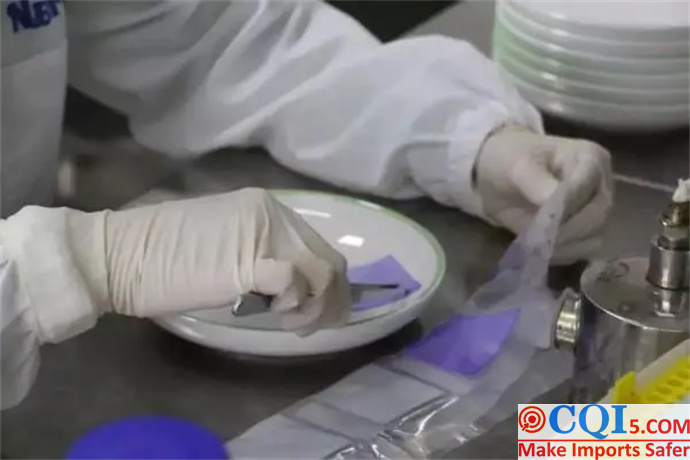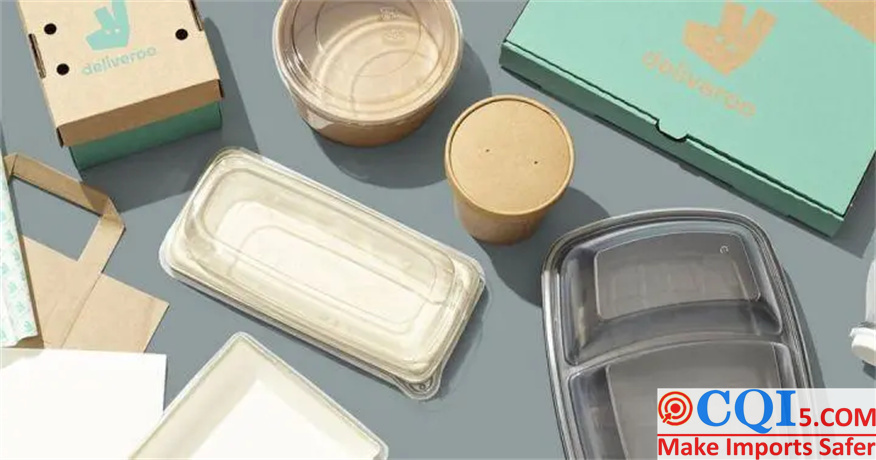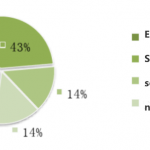The Disposable Tableware Inspection Standard Includes What Parts?
CQI is a third-party quality inspection company in China. Members of the company have a basic understanding of the quality requirements of each product, which is part of our daily inspection. Moreover, we have been engaged in supply chain management for a long time, and we know the most about manufacturing in China. We integrate all kinds of standards and combine them with actual cases, which is much simpler than reading the original standard directly. The following is the specific content of disposable tableware inspection standards.
Product classification:
Disposable tableware can be divided into general plastic disposable tableware, plant fiber mold-secondary tableware, starch-based plastic disposable tableware and other plastic-coated disposable tableware according to its material.
Disposable tableware can be divided into disposable tableware that is temperature-resistant and non-temperature-resistant, according to the temperature-resistant degree of the bottle. Disposable tableware can be divided into non-degradable disposable tableware and degradable disposable tableware according to their degradability. Disposable tableware is also printed as disposable tableware for microwave oven and non-microwave oven.
Raw Materials Of Disposable Tableware Inspection Standards
Raw materials such as resin should be food grade 5.2 additives.
And the dosage of additives should meet the requirements of relevant standards.
Senses Of Disposable Tableware Inspection Standards
Do not smell differently; Hands are smooth without obvious spikes.
Methods and conditions: The experiment was carried out in the laboratory under normal conditions.
Appearance Of Disposable Tableware Inspection Standards
The appearance shall meet the following requirements:
- A) normal color;
- B) There can be no cracks and filling defects;
- C) the surface is free of oil, dust, mildew and other foreign matters;
- D) The surface is smooth and clean, with uniform texture, no scratches, wrinkles, peeling, cracking and perforation;
- E) Colored tableware can’t have obvious discoloration, fading, uneven color depth (except for decoration requirements) stains, etc. D If the surface of tableware is coated, the coated surface shall be free of sagging, peeling, cracking, blistering, etc.
- G) There can be no obvious foreign body blistering. Model defects, burrs, expansion and other defects;
Methods: Observed with a 45 angle spot lamp in the laboratory.
Product Structure Of Disposable Tableware Inspection Standards
- A) smooth and regular edges;
- B) For products with lids, the lids should be convenient and flat, and the containers and lids should match;
- C) For products with rebound cover, the cover should be fastened;
D Disposable tableware with container function should be placed stably.
Methods: Observed with a 45 angle spot lamp in the laboratory.
Performance In Use Of Disposable Tableware Inspection Standards
1. Volume deviation
Disposable lunch boxes, bowls, cups, cans, pots and other tableware with the function of holding containers shall have a volume deviation of no more than 5%.
The volume deviation is only required for disposable catering with the function of container, but not for knives, forks, spoons, chopsticks, dishes, plates, etc.
Inspection method: According to the method specified in GB/T17409. During the test, three samples are taken for inspection, and the average of the test results of the three samples is taken as the final test result.
2. Load-bearing performance
Disposable lunch boxes, bowls, cups and other tableware, the height change before and after loading should be no more than 5%.
The load-bearing test is only for disposable tableware such as lunch boxes, bowls and cups that may be stacked or held by hand after food is filled, and there is no requirement for knives, forks, spoons, chopsticks, plates and disposable lined tableware with external supports.
Inspection tools: two pieces of flat glass 200mmx150mmx3mm, 3kg weight, and a metal ruler with an accuracy of 1mm.
3 .Drop performance
—For the drop test of secondary tableware, all three samples shall not have any crack.
Test method: at room temperature, drop the sample from the flat cement floor at a height of 0.8m, and the bottom of the sample falls down freely once, so as to observe whether the sample is in good condition. When testing, take three samples for inspection.
4 .Folding performance of cover body
For disposable tableware with lid and container connected together, there should be no crack or damage after folding test. All three test samples shall be free of cracks and damages.
The lid folding test is only for disposable tableware with lid and container connected together, but not for disposable tableware such as lunch boxes, bowls, cups, plates, dishes, knives, forks, spoons and chopsticks with lid and lunch boxes separated or uncovered.
Inspection method: Open and close the tableware sample with cover for 15 times continuously, and observe whether there is any crack or damage at the joint with the box body. When testing, take three samples for inspection.
Note: Only the catering utensils with lid and box are inspected.
5.Temperature resistance
5.1 Heat-resistant water
After the hot water test of disposable tableware, it should not be deformed, peeled or wrinkled, and the tableware with container function should not be deformed, seeped or leaked. Both samples shall be free from deformation, infiltration and leakage.
Heat-resistant water test only requires disposable tableware such as boxes, cups and bowls that may contain hot vegetables, food and drinks, but does not require disposable tableware such as plates, dishes, knives, forks and chopsticks that do not need to be heat-resistant, nor does it require disposable tableware that is marked as not heat-resistant.
5.2 Heat-resistant oil
After the heat-resistant oil test of disposable tableware, it should not be deformed, peeled or wrinkled, and the tableware with container function should not leak or leak. Both samples shall be free from deformation, infiltration and leakage.
Heat-resistant oil test only requires disposable tableware such as boxes and bowls that may hold hot vegetables and food, but does not require disposable tableware such as plates, dishes, knives, forks and chopsticks that do not require heat-resistant oil, disposable water cups and disposable tableware that are not temperature-resistant.
Test method: Put two samples on an enamel plate lined with filter paper, fill it with 95℃ 5℃ hot water (100℃ hot water for instant noodles bowl) or hot edible oil (only 100℃ water temperature test for drinking utensils), then move it to a constant temperature box at 60℃ and let it stand for 30min, and then observe whether the samples are deformed, discolored or leaking.
5.3 Water leakage
Disposable tableware such as boxes, bowls, cups, etc. containing liquid functions should not leak after the test.
It is not required to mark disposable tableware such as boxes, bowls and cups that do not hold liquid, and it is not required for other disposable tableware that do not hold liquid.
Test method: Put two samples on an enamel plate lined with filter paper, fill it with water at 23℃ 2℃, and let it stand for 30min, then observe whether the sample box is deformed or not, and whether the bottom of the box shows signs of yin leakage or leakage.
5.4 Microwave oven resistance test
5.4.1 High-frequency heating performance of microwave oven
There should be no electric spark, no defects, strange smell and abnormality. The two test samples shall be free from defects, odor and abnormality.
5.4.2 Temperature Resistance of Microwave Oven
There should be no deformation, defect, leakage and abnormality. All three test samples shall be free from deformation, defect, leakage and abnormality.
Test method: Pour about 50% olive oil into the sample, put it in the microwave oven and heat it. When the microwave oven temperature of the sample mark is less than 200℃, heat the olive oil to reach the marked temperature; When the sample mark is resistant to microwave oven temperature ≥200℃, heat it to 200℃. After the temperature reaches, stop heating, take out the sample, cool it at room temperature to room temperature, and observe whether there is deformation, defect, leakage and abnormality.
Repeat the above steps for another two samples.
Note: Only the tableware that can be used in microwave oven and hold liquid food is tested.

Water Content Of Disposable Tableware Inspection Standards
The water content of disposable tableware made of natural materials, such as plant fiber molded tableware, should be no more than 7%.
The water content is only required for disposable tableware made of natural materials, but not for disposable tableware made of other materials.
Inspection method: According to GB/T462.
During the test, three samples are taken for inspection, and the average of the test results of the three samples is taken as the final test result.
Biodegradability Of Disposable Tableware Inspection Standards
The biodegradability of degradable disposable tableware should meet the requirements of GB/T 20197-2006.
Test method: Biodegradation test method is according to 6.1 in GB/T 20197-2006.
If the inspection results of all inspection items are all qualified, the batch will be judged as qualified.
Packaging, packaging marks, transportation and storage Of Disposable Tableware Inspection Standards
1.packaging
The product should have two layers of packaging, inner and outer. The package should be neat and accurate, and meet the following requirements: a) The inner package should be sealed, and its material must be clean, nontoxic, odorless, and dustproof and waterproof; B) The outer packing case shall be pressure-resistant, dustproof and moisture-proof.
2. Packaging marks
A descriptive label shall be attached to the packing box, indicating the following contents:
A) implementation standard number;
B) Product name, type and material;
C) Name or trademark of the manufacturer, batch number and production date;
D) If the product is declared to be resistant to high temperature or not, the maximum durable temperature shall be marked;
E) If the product is declared to be microwave-heated, it should be marked with the microwave-usable temperature, etc.
If the product is declared to be degradable, it should be marked as degradable;
If the product statement is made of starch-based plastic, the tableware of starch-based plastic should be marked;
H) For disposable tableware with capacity requirements, the nominal volume shall be marked.
The surface of the outer packing box shall be marked with the following contents:
A) implementation standard number;
B) Product name, type and material;
C) Name or trademark of manufacturer, batch number and production date:
D) Product quantity or gross weight, net weight and volume of packaging;
E) If the product statement is made of starch-based plastic, the tableware made of starch-based plastic shall be marked;
G) product storage conditions and storage period;
H) The words “for food” and the signs “Protect against pollution, rain, pressure and handle gently”.
F) For disposable tableware with capacity requirements, the nominal volume shall be marked.
I) If the product is declared to be resistant to high temperature or not, the maximum durable temperature shall be marked;
J) If the product is declared to be microwave-heated, it should be marked with the microwave-usable temperature, etc. If it is not heat-resistant, it should be marked with oil-resistant;
K) If the product is declared to be degradable, it should be marked as degradable;
3.Transportation and storage
Do not mix with toxic, harmful or smelly goods.
During transportation, it should be handled lightly to avoid violent vibration, extrusion and exposure to the sun and rain.
Products should be stored in a ventilated, cool and dry warehouse, protected from sunlight and rain, away from pollution sources and heat sources, and protected from moisture, rats and insects. The reasonable storage period should be determined according to the performance of disposable tableware.
The above is the inspection standard of disposable tableware used by CQI. At the same time, CQI will focus on the steps that are prone to problems in the inspection according to the bad reviews of common disposable tableware in e-commerce and the production process of disposable tableware.
If you are interested in our inspection service and want to know more information, you can email our customer service email cqi@cqi5.com.cn, and we will help you!
CQI5 is committed to providing importers worldwide with product quality inspection services that far exceed those of our peers. If you are planning to import or have imported from China or Southeast Asian countries, please contact us cs’@’cqipro.com to learn more about how we can make your imports safer.
This article is an original article for CQI Inspection, who is committed to providing high-quality product inspection technology and know-how sharing for global importers and retailers to make imports safer.
All rights reserved. The contents of this website provided by CQI Inspection may not be reproduced or used without express permission.
For reprint, please contact with CQI Inspection, thank you.






